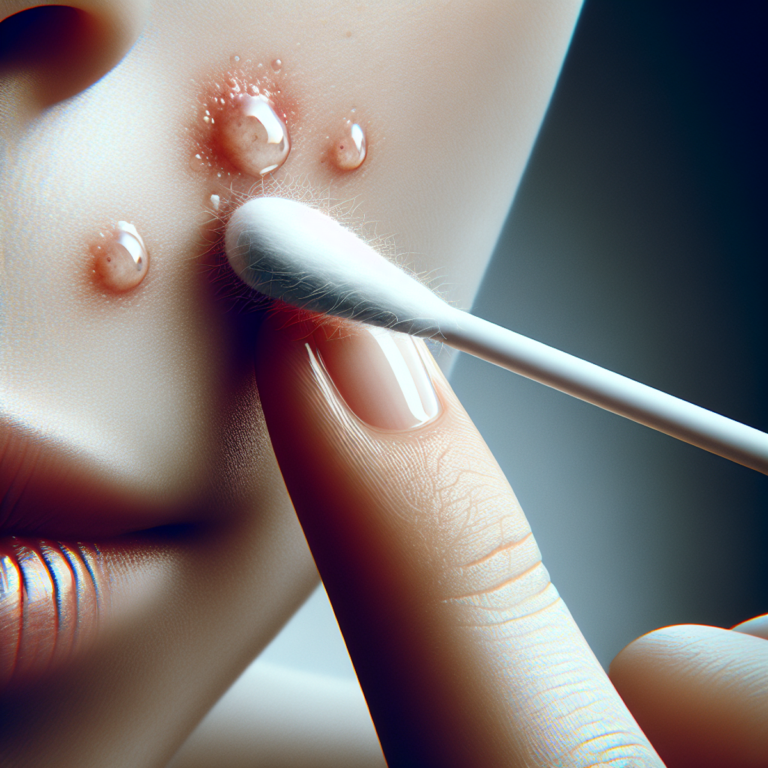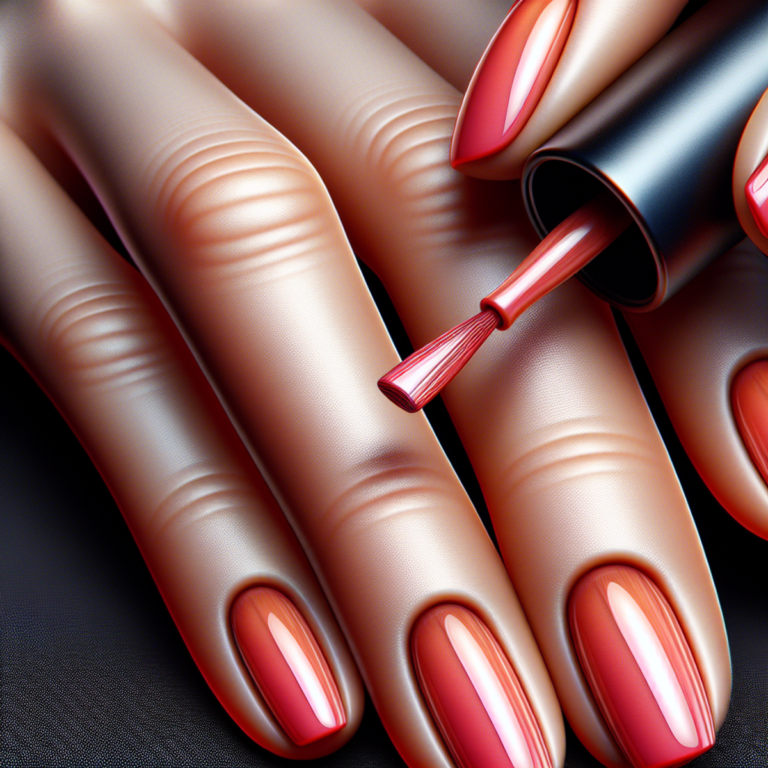A recap of the biggest skincare trends this year so far

Introduction
Staying updated with skincare trends is essential for maintaining optimal skin health. As the beauty industry continues to evolve, new products, techniques, and innovations emerge, offering exciting possibilities for achieving our skincare goals. In this article, we will provide a recap of the biggest skincare trends in 2021 so far. From skincare acids to sustainable practices, we will explore the latest developments and discuss their benefits.
The purpose of this article is to serve as a comprehensive guide, ensuring that you have all the information you need to make informed decisions about your skincare routine. By understanding the trends and their impact on skin health, you can tailor your regimen to meet your specific needs and achieve desired results. So let’s dive into the world of skincare trends and discover the key factors driving change in the industry.
1. Skincare Acids: The Power Players
Skincare acids have become power players in the quest for healthy and radiant skin. These potent ingredients offer a range of benefits, from exfoliation and brightening to addressing specific skin concerns. One standout acid is glycolic acid, a member of the alpha-hydroxy acid (AHA) family.
- Glycolic acid: Known for its ability to exfoliate the skin, glycolic acid helps remove dead cells from the surface, revealing a brighter complexion underneath. It can also stimulate collagen production, leading to smoother and firmer skin.
In addition to glycolic acid, there are several other popular skincare acids worth trying:
- Hyaluronic acid: This humectant attracts moisture to the skin, making it an excellent choice for hydration and plumping fine lines.
- Salicylic acid: Ideal for oily or acne-prone skin, salicylic acid helps unclog pores and reduce inflammation.
- Lactic acid: Similar to glycolic acid but less intense, lactic acid gently exfoliates while hydrating the skin.
By incorporating skincare acids into your routine, you can target specific concerns and enhance the overall health and appearance of your skin.
2. Ingredient Transparency and Sustainable Skincare
In recent years, there has been a growing demand for ingredient transparency in skincare products. Consumers are increasingly interested in knowing what goes into the products they use and how those ingredients may affect their skin and overall health. This trend reflects a desire for clean, safe, and effective skincare options.
- Ingredient transparency: Brands are responding to this demand by providing detailed ingredient lists and avoiding potentially harmful substances such as parabens, sulfates, and synthetic fragrances. This allows consumers to make more informed choices based on their individual preferences and sensitivities.
- Sustainable skincare practices: The focus on ingredient transparency aligns with the broader movement toward sustainable skincare practices. Brands are incorporating eco-friendly packaging, responsibly sourced ingredients, and ethical production methods to reduce their environmental impact.
Clean and eco-friendly ingredients are gaining popularity in the skincare industry:
- Natural extracts: Ingredients like aloe vera, chamomile, and green tea offer soothing properties without harsh chemicals.
- Organic oils: Plant-based oils such as jojoba, rosehip, and argan provide nourishment and hydration to the skin.
- Biodegradable exfoliants: Replacing microbeads with natural alternatives like rice bran or sugar helps protect marine life while maintaining effective exfoliation.
By embracing ingredient transparency and sustainable practices, you can prioritize not only the health of your skin but also the health of our planet.
1. Skincare Acids: The Power Players
Skincare acids have been one of the biggest trends in the beauty industry this year, and for good reason. These powerful ingredients offer a wide range of benefits for your skin, from exfoliation to brightening and more. Let’s dive deeper into the world of skincare acids and discover why they are considered the power players in your skincare routine.
Explanation of Skincare Acids and Their Benefits
Skincare acids are chemical compounds that work to improve the texture, tone, and overall appearance of your skin. They can be derived from natural sources or created synthetically, and each acid has its own unique properties and benefits. Some of the most popular skincare acids include:
- Glycolic Acid: This alpha hydroxy acid (AHA) is derived from sugar cane and is known for its exfoliating properties. It works by gently dissolving dead skin cells on the surface, revealing smoother and brighter skin underneath. Glycolic acid also helps stimulate collagen production, reducing the appearance of fine lines and wrinkles over time.
- Hyaluronic Acid: Unlike other acids, hyaluronic acid is a humectant that attracts moisture to the skin. It is naturally found in our bodies and has the ability to hold up to 1,000 times its weight in water. By incorporating hyaluronic acid into your skincare routine, you can hydrate your skin, plump up fine lines, and improve overall moisture levels.
- Salicylic Acid: This beta hydroxy acid (BHA) is well-known for its ability to penetrate deep into the pores and unclog them. It is particularly effective in treating acne-prone skin as it helps remove excess oil, dead skin cells, and bacteria that can lead to breakouts. Salicylic acid also has anti-inflammatory properties, making it beneficial for reducing redness and swelling.
How Glycolic Acid Helps in Exfoliation and Brightening
Glycolic acid is a standout among skincare acids due to its ability to exfoliate the skin effectively. When applied topically, it breaks down the bonds between dead skin cells, allowing them to be sloughed away more easily. This process not only helps to unclog pores but also promotes cell turnover, revealing fresher and brighter skin.
Moreover, glycolic acid stimulates the production of collagen and elastin in the deeper layers of the skin. These proteins are essential for maintaining the skin’s elasticity and firmness. By increasing their production, glycolic acid can help reduce the appearance of fine lines, wrinkles, and uneven texture over time.
Other Popular Skincare Acids to Try
While glycolic acid is a superstar in the world of skincare acids, there are many other options worth exploring. Here are a few other popular skincare acids to consider incorporating into your routine:
- Lactic Acid: Another AHA, lactic acid is derived from milk and is known for its gentle exfoliating properties. It helps improve skin texture, minimize hyperpigmentation, and enhance overall radiance.
- Azelaic Acid: This multitasking acid has both exfoliating and brightening properties. It helps to unclog pores, reduce inflammation, fade dark spots, and even out skin tone.
- Mandelic Acid: Derived from bitter almonds, mandelic acid is an AHA with larger molecules that penetrate the skin more slowly. This makes it suitable for sensitive skin types as it provides gentle exfoliation without causing irritation.
Remember, when introducing skincare acids into your routine:
- Start slowly
- Patch test first to ensure your skin can tolerate them
- Always follow up with sunscreen as some acids can increase sun sensitivity
Skincare acids have revolutionized the way we approach skincare, offering targeted solutions for various skin concerns. Whether you’re looking to exfoliate, brighten, or address specific issues like acne or hyperpigmentation, incorporating the right skincare acids can help you achieve your desired results. Experiment with different acids and find the ones that work best for your skin type and concerns.
2. Ingredient Transparency and Sustainable Skincare
As the skincare industry continues to evolve, there is a growing demand for ingredient transparency and sustainable skincare practices. Consumers are becoming more conscious of the products they use on their skin and the impact of these products on the environment. This has led to a shift towards clean and eco-friendly ingredients in skincare products.
Growing Demand for Ingredient Transparency
Consumers are increasingly seeking clarity about the ingredients used in their skincare products. They want to know what they are applying to their skin and understand the purpose of each ingredient. This demand for transparency has prompted many skincare brands to provide detailed information about their product formulations, allowing consumers to make informed decisions about their purchases.
Benefits of Sustainable Skincare Practices
Sustainable skincare practices not only benefit the environment but also contribute to overall skin health. By opting for sustainable products, individuals can minimize their carbon footprint while supporting ethical and environmentally friendly manufacturing processes. Additionally, sustainable skincare often involves using natural ingredients that are gentle on the skin and free from harsh chemicals, making them suitable for a wide range of skin types.
Discussion on Clean and Eco-Friendly Ingredients
The focus on ingredient transparency has brought attention to clean and eco-friendly ingredients that offer effective skincare benefits without compromising environmental responsibility. These ingredients may include:
- Plant-based extracts
- Biodegradable packaging
- Cruelty-free formulations
By prioritizing such ingredients, consumers can align their skincare routines with eco-conscious values while enjoying the nourishing properties of natural elements.
In summary, the emphasis on ingredient transparency and sustainable skincare reflects a shift towards conscientious consumer choices and a desire for products that promote both personal well-being and environmental sustainability. As this trend continues to gain momentum, it is expected that more innovative solutions will emerge, catering to the evolving preferences of mindful consumers.
3. Combating Maskne: Breakouts from Mask-Wearing
As we continue to adapt to the new normal of mask-wearing, many individuals have experienced an increase in skin issues, particularly the emergence of “maskne.” This term refers to the acne and breakouts that result from wearing face masks for extended periods. The combination of heat, friction, and trapped moisture can create a breeding ground for bacteria, leading to clogged pores and inflammation.
Causes of Maskne
The primary causes of maskne include:
- Friction: The constant rubbing of the mask against the skin can lead to irritation and micro-tears, making it easier for bacteria to penetrate.
- Trapped Moisture: Breathing into a mask creates a humid environment, causing sweat and oil to become trapped against the skin.
- Bacterial Buildup: Prolonged wear of masks can lead to an accumulation of bacteria on the skin’s surface.
Maskne Treatments and Effectiveness
Several treatments can effectively address maskne breakouts:
- Salicylic Acid: This beta-hydroxy acid (BHA) penetrates oil-filled pores, exfoliating inside the pore as well as on the surface of the skin. It helps to reduce inflammation and prevent future breakouts.
- Benzoyl Peroxide: Known for its antibacterial properties, benzoyl peroxide targets the bacteria that contribute to acne. It also helps to remove excess oil and dead skin cells.
- Retinoids: These vitamin A derivatives help with cell turnover, preventing pores from becoming clogged and reducing inflammation.
- Hydrocolloid Patches: These adhesive patches are designed to absorb fluid from the blemish, creating an optimal environment for healing while protecting the area from further irritation.
- Gentle Cleansing: Using a mild, non-abrasive cleanser can help remove impurities without further irritating the skin.
Tips for Preventing and Managing Maskne
In addition to specific treatments, there are preventive measures and management techniques that can help minimize mask-induced breakouts:
- Choose Breathable Fabrics: Opt for masks made from breathable materials such as cotton to reduce friction and allow better airflow.
- Frequent Mask Changes: If possible, change your mask throughout the day to reduce buildup of oil and bacteria.
- Hydrate and Moisturize: Keeping your skin well-hydrated can help maintain its natural protective barrier. Use non-comedogenic moisturizers to avoid clogging pores.
- Avoid Makeup Under Masks: Wearing heavy makeup under a mask can exacerbate clogged pores. Consider using minimal or no makeup in areas covered by a mask.
- Mask-Free Intervals: When safe and appropriate, take short breaks from wearing a mask in well-ventilated areas.
By understanding the causes of maskne and implementing effective treatments and preventive measures, you can manage and combat breakouts arising from prolonged mask-wearing.
4. Blue Light and Tech Protection Skincare
Blue light, also known as high-energy visible (HEV) light, is emitted from digital screens such as smartphones, computers, and tablets. Its impact on skin health has become a growing concern due to the increased time spent in front of electronic devices.
Understanding Blue Light and Its Effects on the Skin
Blue light can penetrate the skin more deeply than UVA and UVB rays, which can potentially cause damage to the skin and accelerate aging. Research indicates that prolonged exposure to blue light may lead to:
- Hyperpigmentation
- Inflammation
- Weakening of the skin’s protective barrier
Why It’s Important to Shield Your Skin from Digital Lifestyle Effects
With the rise of remote work and increased screen time, it is crucial to protect your skin from the potential harm caused by blue light exposure. Here’s why:
- Preventing Premature Aging: Blue light can contribute to the breakdown of collagen and elastin in the skin, leading to wrinkles and sagging.
- Maintaining Skin Radiance: Excessive blue light exposure may disrupt the natural balance of melanin production, resulting in uneven skin tone.
- Preserving Skin Barrier Function: The skin’s barrier acts as a shield against external aggressors. Continuous exposure to blue light can weaken this barrier, making the skin more susceptible to damage.
How Tech Protection Skincare Products Can Help
Skincare brands have responded to this trend by introducing products designed specifically for blue light and tech protection. These products often contain:
- Antioxidants like vitamin C and E: These ingredients help neutralize free radicals generated by blue light.
- Niacinamide: Known for its soothing properties, niacinamide can help calm inflammation caused by blue light.
- Mineral sunscreens: Physical sunscreens with ingredients like zinc oxide or titanium dioxide provide an additional layer of protection against both UV and blue light.
The emerging category of tech protection skincare includes serums, moisturizers, and facial mists formulated to create a shield against environmental stressors, including blue light. These products aim to support overall skin health while providing a defense mechanism against the potential adverse effects of modern digital lifestyles.
5. Skinmalism: Streamlined Skincare Routines for Quick Improvement
Skinmalism has become a popular trend in the skincare world, focusing on simplicity and effectiveness in skincare routines. The main idea behind skinmalism is to use fewer products with powerful ingredients that actually work, leading to healthier skin and addressing common issues. Let’s take a closer look at what skinmalism is all about and how it can transform your skincare routine:
Understanding Skinmalism and Its Principles
Skinmalism is all about simplifying your skincare routine by getting rid of unnecessary steps and products. It’s about using only what you need and what works for your specific skin type and concerns. Here are the key principles of skinmalism:
- Minimalist Approach: Instead of hoarding a bunch of skincare products, focus on having a few essential ones that serve multiple purposes.
- Quality Over Quantity: Invest in high-quality products with proven ingredients that actually deliver results, rather than buying a ton of cheap products that don’t do much.
- Personalization: Tailor your skincare routine to fit your individual needs and goals, rather than following generic routines that may not work for you.
By embracing these principles, skinmalism aims to make skincare simpler, more effective, and less overwhelming.
The Benefits of Simplified Skincare Routines with Results-Driven Ingredients
So why should you consider adopting a skinmalism approach to your skincare routine? Here are some compelling benefits:
- Effortless Consistency: When your routine is simple and easy to follow, you’re more likely to stick with it consistently. Consistency is key when it comes to seeing results in skincare.
- Reduced Sensitivity and Irritation: Using fewer products can help minimize the risk of irritation or allergic reactions caused by ingredient overload.
- Cost-Efficiency: Investing in high-quality products may seem expensive upfront, but in the long run, it can actually save you money compared to constantly buying new products that don’t work.
- Environmental Sustainability: By consuming less and being more mindful of the products you use, you’re contributing to a more sustainable approach to skincare.
Quick Improvement Techniques for Common Skin Issues
One of the great things about skinmalism is that it offers simple yet effective techniques to address common skin concerns without overwhelming your skin with too many products. Here are some popular techniques:
- Multi-Functional Products: Look for skincare products that serve multiple purposes, such as a moisturizer with SPF or a serum that targets both hydration and brightening.
- Focus on Key Ingredients: Identify the key ingredients that have been proven to work for your specific skin concerns, such as vitamin C for brightening or hyaluronic acid for hydration. Consider incorporating natural ingredients into your routine where possible.
- Consistent Sun Protection: Make wearing sunscreen every day a non-negotiable part of your skincare routine. This is crucial for protecting your skin from sun damage and premature aging.
By incorporating these techniques into your minimalist skincare routine, you
Other Notable Skincare Trends in 2021
As we explore the ever-changing world of skincare, it’s important to take a look at some other significant trends that have been popular in 2021. These trends show a growing focus on overall well-being, customized solutions, and the use of technology in skincare routines.
1. Ingestible Collagen Supplements
- Collagen supplements have become increasingly popular as a way to improve skin health from the inside out.
- These products are designed to support the body’s natural collagen production, which helps maintain skin elasticity and hydration.
2. Skin Tech Gadgets
- The combination of skincare and technology has led to the development of various innovative gadgets that can enhance skincare routines.
- Examples include facial cleansing devices with sonic technology and advanced at-home skin analysis tools.
- These gadgets offer consumers new options for taking care of their skin.
3. Probiotics for Skin Health
- The use of probiotics in skincare products shows a growing understanding of the importance of the skin’s natural balance.
- Probiotic-infused products aim to promote a healthy balance of bacteria on the skin, which can help with issues like inflammation and sensitivity.
4. Eco-Friendly Skincare Products
- The focus on sustainability has had an impact on the skincare industry, leading to a higher demand for environmentally friendly products.
- Brands are now prioritizing packaging that is eco-friendly, using ingredients that are sourced ethically, and implementing sustainable production methods.
- This shift is in line with consumers’ increasing concern for the environment.
5. Hyper-Personalized Beauty
- The trend of personalized products has extended to skincare, with brands using advanced technologies to create customized solutions for specific skin concerns.
- This includes personalized serums, moisturizers, and treatments based on detailed assessments of each person’s skin needs.
6. App-Analyzed Smart Skincare
- Innovative mobile apps are using artificial intelligence and data analysis to provide personalized skincare recommendations and routines.
- These apps take into account user input and environmental factors to offer insights on how to optimize skincare habits based on individual lifestyles and preferences.
7. Holistic Approach to Skincare Shopping
- Consumers are now taking a more holistic approach when it comes to buying skincare products.
- They are not only considering the effectiveness of the product but also factors such as ethical sourcing, social impact, and brand values.
- This trend reflects a shift towards mindful consumption and a desire for transparency in the entire supply chain.
These additional skincare trends show that beauty practices in 2021 are multifaceted. From embracing new technologies to prioritizing sustainability and customization, skincare is constantly changing to meet the needs and wants of consumers.
The Future of Skincare Trends
Looking ahead, it’s important to understand how the skincare industry will continue to change and influence our beauty habits. Here are some predictions for future skincare trends and tips on adjusting to these changes while keeping a consistent routine.
Predictions for the Future of Skincare Trends
- Customization and Personalization: Skincare is expected to become more personalized, with technology advancements allowing for tailored solutions based on individual skin needs. We can expect the use of AI in analyzing skincare needs, leading to more personalized product recommendations and treatment plans.
- Innovative Ingredients: As research on skincare ingredients progresses, we can look forward to new effective components that target specific skin issues. Keep an eye out for advancements in natural actives, formulations that support healthy skin bacteria, and advanced delivery systems for better product effectiveness.
- Holistic Wellness Integration: The idea of holistic beauty will gain more popularity, focusing on overall well-being and its impact on skin health. Skincare brands might start incorporating adaptogens, CBD-infused products, and supplements designed to support both internal wellness and topical treatments.
- Sustainability and Ethical Practices: The demand for sustainable, environmentally-friendly skincare will continue, pushing brands to prioritize eco-friendly packaging, ethical sourcing of ingredients, and transparent supply chains. Consumers can expect more emphasis on using recyclable materials and adopting carbon-neutral production methods.
Adapting to Changing Trends While Building a Consistent Routine
It can be challenging to keep up with evolving skincare trends while sticking to a routine that works for you. However, with some mindful strategies, it is possible:
- Stay Informed: Keep up-to-date with industry news from reliable sources such as scientific journals, trusted blogs by experts, and verified skincare professionals. Having knowledge about emerging trends empowers you to make better decisions when adjusting your routine.
- Be Flexible with Product Choices: Embrace a flexible mindset when it comes to trying out new products as trends change. It’s okay to experiment with innovative formulas while still using reliable products that have proven to be effective for your skin.
- Seek Professional Advice: If you’re considering making significant changes to your routine based on new trends, it’s a good idea to consult with dermatologists or skincare specialists. Their expertise can help you navigate the overwhelming number of options in the ever-changing market.
- Think Long-Term: When incorporating new trends into your routine, consider their potential long-term benefits instead of just looking for immediate results. Consistency is key in achieving lasting improvements in skin health.
Embracing the future of skincare means being adaptable but selective in how you approach it. By staying updated on emerging trends while maintaining a consistent skincare routine that suits your needs, you’ll be well-prepared to navigate the ever-changing world of beauty innovations.
Conclusion
The skincare industry is always changing, and it’s important to stay updated on the latest trends for healthy skin. As we’ve discussed the top skincare trends of 2021, it’s clear that knowing what goes into your products, making sustainable choices, and finding personalized solutions are becoming more and more crucial. Let’s summarize the main points and think about how skincare trends are evolving.
Why It’s Important to Stay Informed
Keeping up with skincare trends is about more than just following what’s popular – it’s about empowering yourself with knowledge to make smart decisions about your skincare routine. By understanding the benefits of different ingredients and techniques, you can customize your regimen to fit your skin’s specific needs. This proactive approach can result in healthier, clearer, and more radiant skin.
Final Thoughts on How Skincare Trends Are Changing
The skincare industry is shifting towards using clean and sustainable ingredients, showing a growing awareness of how our choices affect the environment and our own well-being. People are embracing “skinmalism” – a simpler approach to skincare that focuses on quality rather than quantity. This trend highlights the use of effective ingredients in uncomplicated routines, providing practical solutions for common skin issues.
New technologies have also led to the development of products designed to protect against blue light and other potential damage from our digital devices. As we spend more time in front of screens, safeguarding our skin from blue light exposure has become important. Beauty and technology are coming together to create innovative skincare options for modern needs.
Furthermore, wearing masks has brought up discussions about treating mask-induced acne (“maskne”). Knowing the causes and effective ways to manage breakouts caused by masks has become essential for many people. This trend shows how skincare practices can adapt to changes in our lives.
Embracing Change while Maintaining Consistency
Looking ahead, it’s important to be open to new trends while also sticking to a consistent skincare routine that aligns with your skin goals. Future skincare trends may introduce exciting ingredients, techniques, or technologies that offer great benefits for different skin types. Embracing these changes while staying true to basic skincare principles will help you navigate future trends effectively.
As we wrap up this discussion on the major skincare trends of 2021, remember that knowing what you’re using on your skin and making choices that prioritize its health are powerful actions. By staying informed about evolving trends and making conscious decisions about your skincare, you can start a journey towards glowing and resilient skin.
Ultimately, let your skincare routine be an expression of self-care, learning, and empowerment – embracing the transformative power of staying up-to-date with the latest happenings in the world of skincare.










